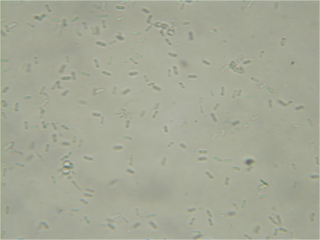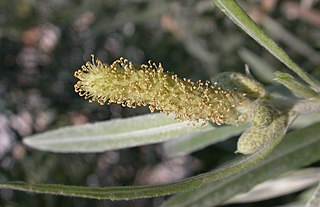
The beet armyworm or small mottled willow moth is one of the best-known agricultural pest insects. It is also known as the asparagus fern caterpillar. It is native to Asia, but has been introduced worldwide and is now found almost anywhere its many host crops are grown. The voracious larvae are the main culprits. In the British Isles, where it is an introduced species and not known to breed, the adult moth is known as the small mottled willow moth.

Cymothoa exigua, or the tongue-eating louse, is a parasitic isopod of the family Cymothoidae. This parasite enters fish through the gills. The female attaches to the tongue and the male attaches on the gill arches beneath and behind the female. Females are 8–29 millimetres (0.3–1.1 in) long and 4–14 mm (0.16–0.55 in) wide. Males are approximately 7.5–15 mm (0.3–0.6 in) long and 3–7 mm (0.12–0.28 in) wide. The parasite severs the blood vessels in the fish's tongue, causing the tongue to fall off. It then attaches itself to the remaining stub of the tongue and becomes the fish's new tongue.

Phoma exigua is a fungal plant pathogen. It causes wet weather blight in cotton and it can be treated with systemic copper.

Salix exigua is a species of willow native to most of North America except for the southeast and far north, occurring from Alaska east to New Brunswick, and south to northern Mexico. It is considered a threatened species in Massachusetts while in Connecticut, Maryland, and New Hampshire it is considered endangered.

Phoma is a genus of common coelomycetous soil fungi. It contains many plant pathogenic species.

Claytonia exigua is a species of wildflower known by the common names serpentine springbeauty and pale claytonia, in the family Montiaceae.
Orthomecyna is a genus of moths of the family Crambidae. All species are endemic to Hawaii.

Madia exigua is a species of flowering plant in the aster family known by the common names small tarweed and threadstem madia.

Stephanomeria exigua, the small wirelettuce, is a perennial or biennial plant native to the western United States. It is thought to be the parent species of Stephanomeria malheurensis, an endangered plant species found only in southern Oregon. It generally blooms from mid-spring to late summer and produces small, light pink or light purple blooms.
Orthomecyna exigua is a moth of the family Crambidae. It is endemic to the Hawaiian islands of Molokai, Maui, Lanai and Hawaii.
Geodia exigua is a species of sponge that produces the sesquiterpene spiro compound exiguamide. The species was first described by Johannes Thiele in 1898. It is a marine organism known from Japan.

Sophronica is a genus of longhorn beetles of the subfamily Lamiinae, containing the following species:
Sophronica bimaculipennis is a species of beetle in the family Cerambycidae. It was described by Stephan von Breuning in 1955, originally under the genus Sophronisca. It is known from Ghana, the Ivory Coast, and Guinea. It contains the varietas Sophronica bimaculipennis var. besnardi.
Sophronica rufiniceps is a species of beetle in the family Cerambycidae. It was described by Breuning in 1949. It is known from the Central African Republic, Angola, the Ivory Coast, the Democratic Republic of the Congo, Cameroon, and Uganda.
Sophronica rufobasiantennalis is a species of beetle in the family Cerambycidae. It was described by Stephan von Breuning in 1948. It contains the varietas Sophronica rufobasiantennalis var. ovalis.
Sophronica rufulescens is a species of beetle in the family Cerambycidae. It was described by Stephan von Breuning in 1940. It feeds on the Monterey Pine.
Sophronica subdivisa is a species of beetle in the family Cerambycidae. It was described by Stephan von Breuning in 1940.
Sophronica angusticollis is a species of beetle in the family Cerambycidae. It was described by Per Olof Christopher Aurivillius in 1928. It is known from Somalia, Ethiopia, Tanzania, and Kenya.
Sophronica grisea is a species of beetle in the family Cerambycidae. It was described by Per Olof Christopher Aurivillius in 1908.
Sophronica amplipennis is a species of beetle in the family Cerambycidae. It was described by Francis Polkinghorne Pascoe in 1888.







